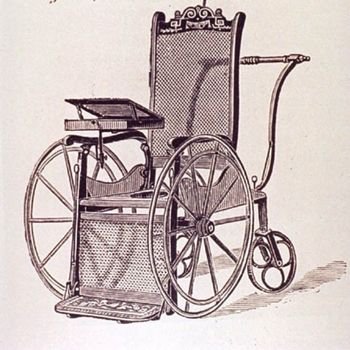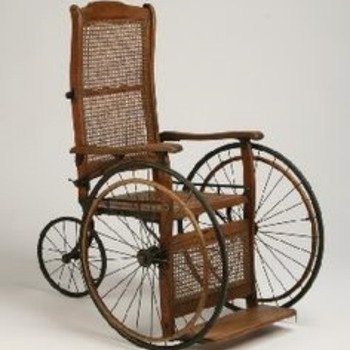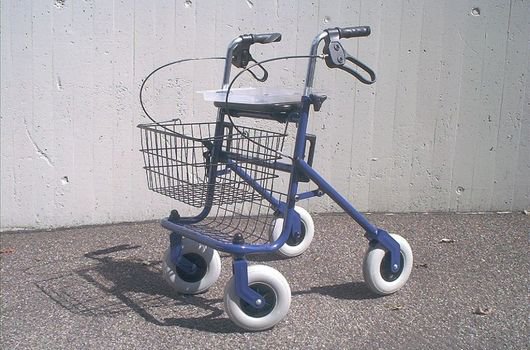One of our ATLAS members looks back at the history of mobility aids and how they have developed over the years.
Introduction
The evolution of personal mobility aids is very linked into the way society viewed, or was aware of, people with reduced mobility. If we look back to the Middle Ages, for example, society didn't feel responsible for people with reduced mobility or other disabilities. Many disabled people lived as outcasts in a society full of superstition.
One of the very first wheelchairs we know about is from the 5th century B.C. and is this blog's featured image.
Depicted in this 'wheelchair' is Confucius, a famous ancient philosopher and teacher. It was a very rudimentary version of a wheelchair, but was a wheeled device used with the intent of helping people with reduced mobility, so is presented here as an example.
Walking sticks have probably been used for thousands of years. Ultimately, in a rudimentary form you can just pick up a branch and use it to help you walk. However, the time at which these were used more as mobility aids rather than like hiking sticks is unclear.
1500s to 1900s
Mobility aids started to develop much more around the 15th century.
The oldest known use of a walking frame in England is depicted on a piece of clothing from the 14th century. It depicts either the young Virgin Mary, or Jesus, learning to walk using a three-wheeled frame.
In the 15th century, Queen Elizabeth of Spain set up a hospital where soldiers were provided with prosthetic and therapeutic devices, and they would also receive a pension. During her time as queen, institutions for children, blind, deaf and disabled people were also created. Her husband, King Felipe II, used a wheelchair which was quite elaborate for its time. It had arm and foot rests.
But it was only in about the 18th century that wheelchairs were invented that look like the ones we use today. This wheelchair had two large front wheels and a small rear wheel one on each side.
In the 19th century, wheelchairs were made mostly out of wood and wicker. They became popular in the USA, especially amongst veterans of the Civil War (and later on, WWI).
1900 to 1960s
The first folding wheelchair was designed by a pair of engineers in 1932, after one of them had an accident with a landmine during WWI.
Though the first electrically driven wheelchair was created in 1924, the first electric wheelchair was invented after WWII. Lots more soldiers who suffered spinal cord damage in the war had survived, due to advances in technology and medical knowledge, which meant there was a greater demand for wheelchairs.
There had been many improvements to manual wheelchairs, but if you were quadriplegic, you were unable to use a manual wheelchair without the assistance of another person. So, thanks to support from the Canadian Government and other scientists, George Klein invented the electric wheelchair. This enabled people who did not have the energy or mobility to use a self-propelled wheelchair to have more independence.
1960s to 1980s
In the 60s and 70s, mobility scooters and rollators appeared, and walkers similar to the ones used today came into development.
Mobility scooters
These came about for the first time in the late 60s. They were quite successful, and seen as alternatives to the electric wheelchair. They were designed for people who could walk, but who couldn't travel long distances on foot because of problems in their knees or arthritis.
Walkers
A walker is the most stable walking aid. It is made of a frame which you place in front of you and hold onto during movement. These have been used for a long time, but were usually wheeled. In the 70s, walkers more like the Zimmer frames we see used today were created. They were usually made of metal.
Rollators
A rollator is a type of walker that has three or four wheels on it. It also usually has a built in seat, which allows the person using it to stop and rest when needed. Rollators often have a shopping basket attached.
It was invented by Swedish inventor and polio survivor, Aina Wifalk, in 1978.
Want to find out more?
Use the links below to find out more about ATLAS and our participation groups.
Category: ATLAS

